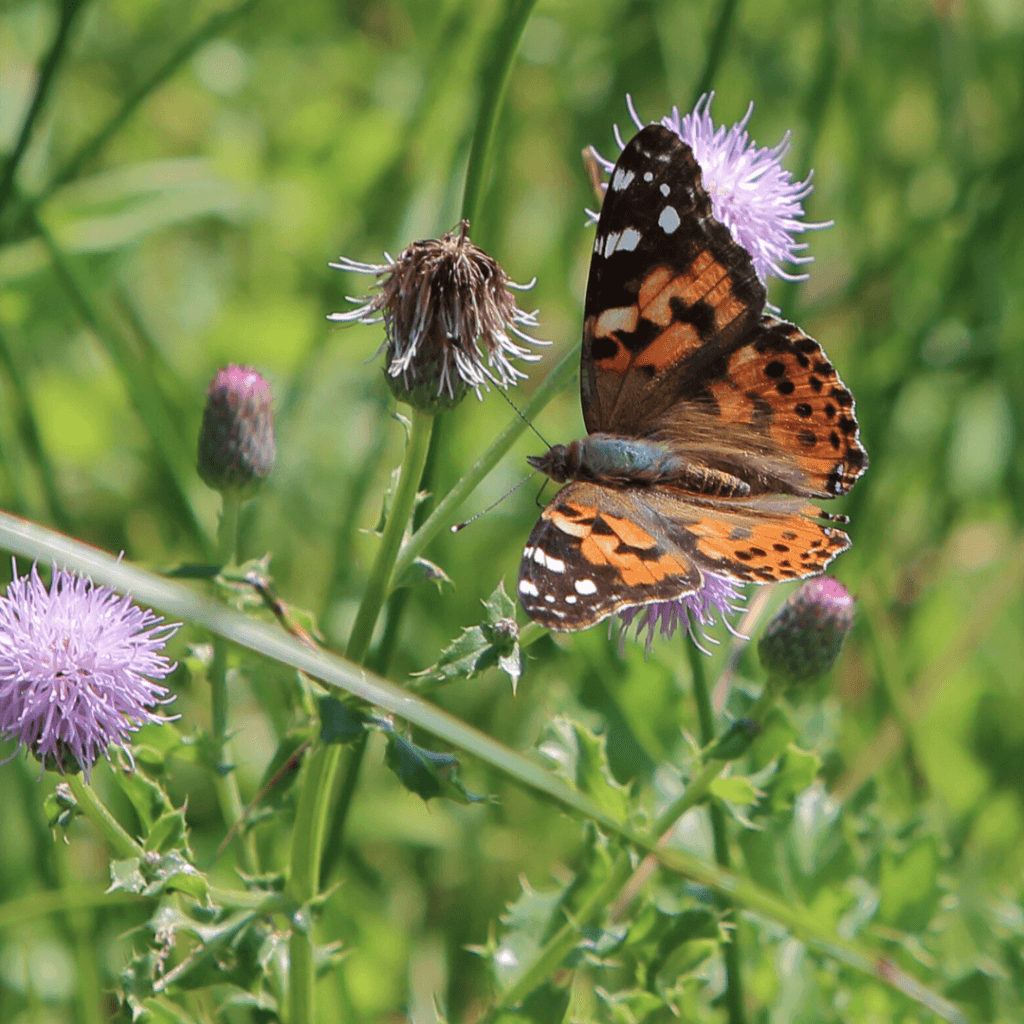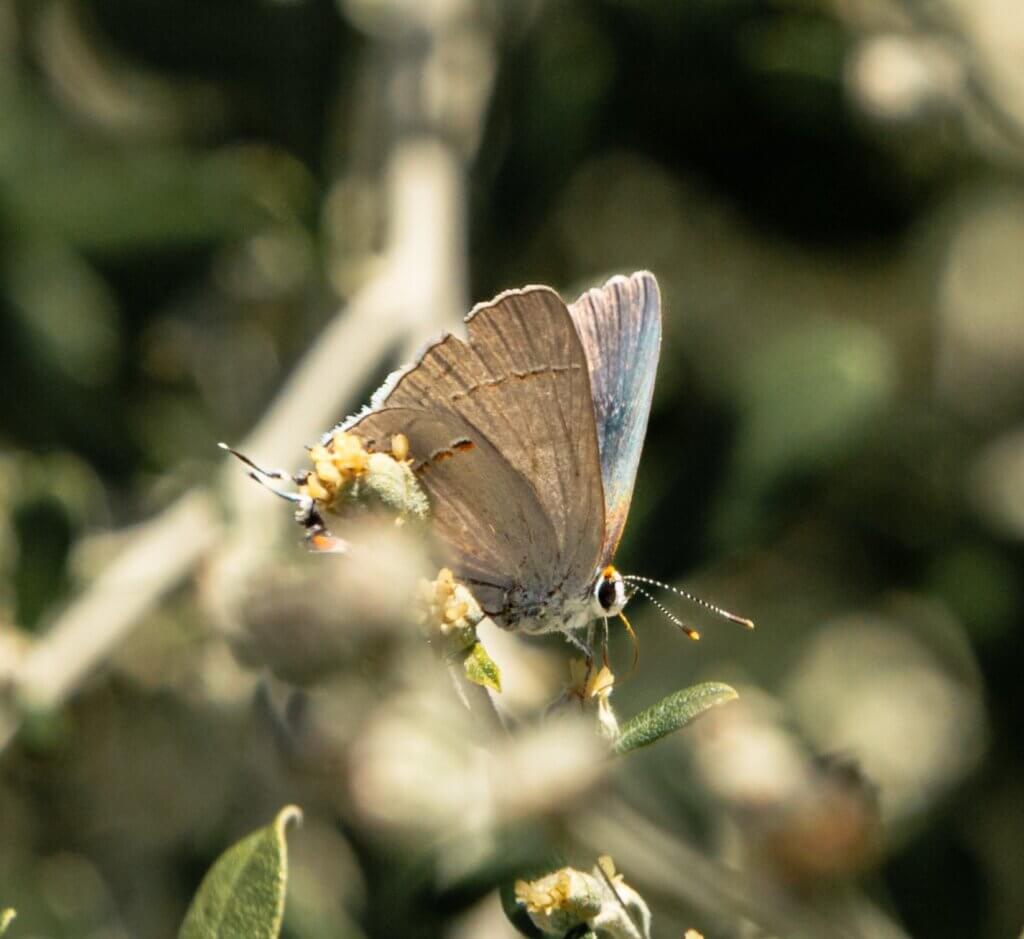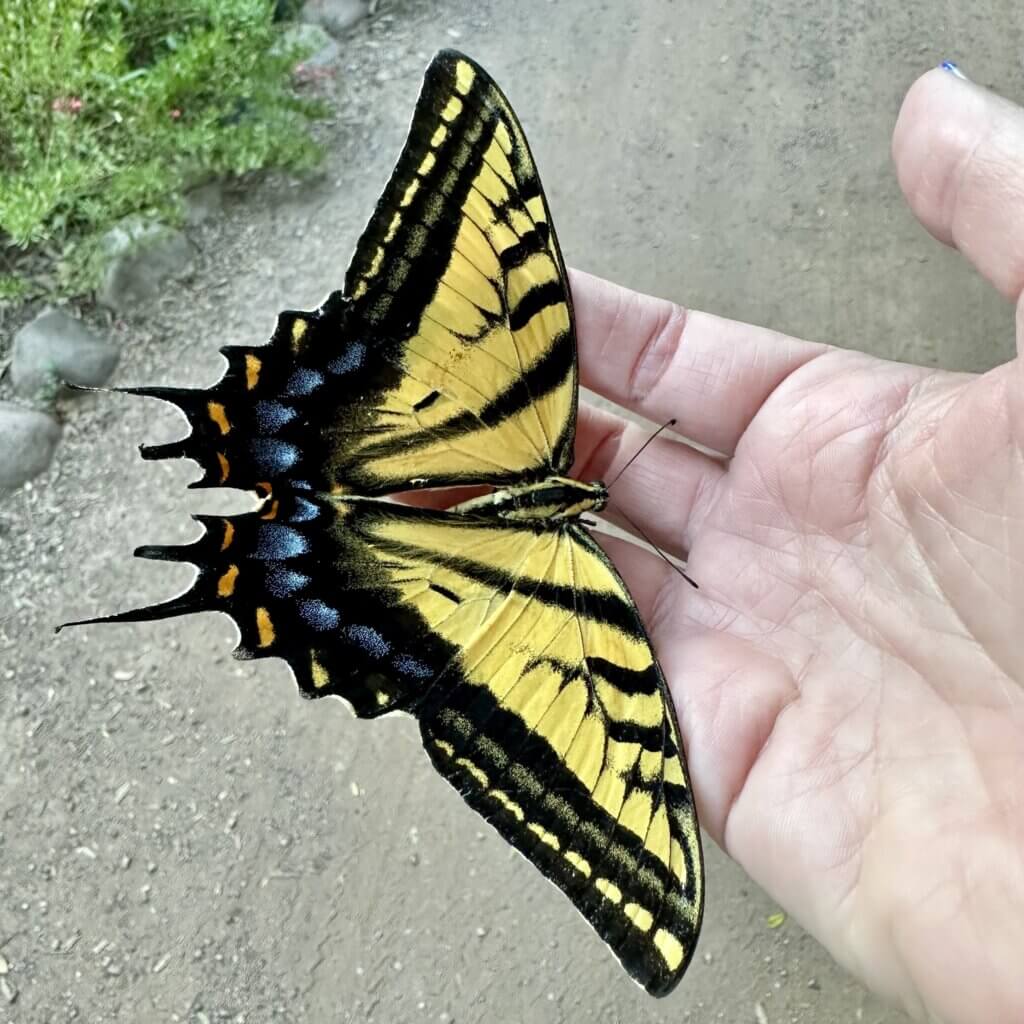15 Butterfly Species Found in Arizona

Arizona is home to over 300 species of butterflies. Each species has its own unique characteristics, from striking colors to intricate patterns. Here are 15 species of butterflies you may encounter at Boyce Thompson Arboretum, Arizona’s largest and oldest botanical garden:

- Monarch Butterfly (Danaus plexippus)
Monarchs are famous for their incredible migration, traveling thousands of miles from Canada to Mexico and back. Monarchs have bright orange wings with black veins and white spots along the edges. Their caterpillars are distinctively striped in yellow, black, and white.

- Painted Lady Butterfly (Vanessa cardui)
Painted lady butterflies are known for their yearly northward migrations, which can sometimes result in large numbers appearing in Arizona. They have orange-brown wings with black and white spots, and a row of small eyespots on the underside of their hindwings.

- Queen Butterfly (Danaus gilippus)
Queen butterflies closely resemble monarchs but are not migratory. They are poisonous to predators. Like monarchs, queens have orange wings with black veins and white spots, but they have more prominent white spots on the forewings.

- Gray Hairstreak (Strymon melinus)
Gray Hairstreaks are small butterflies with wings spanning only about one inch. Their wings are mostly gray, with black and white markings. One of their most distinctive features is a bright orange spot near the edge of their hindwings, which is visible when their wings are open.

- Two-tailed Swallowtail (Papilio multicaudata)
As their name suggests, two-tailed swallowtails have two tails on each hindwing, which are thought to mimic antennae to confuse predators. They have yellow wings with black stripes and blue and orange spots near the tails.

- Arizona Sister (Adelpha eulalia)
Arizona sisters are part of a group of butterflies known as “brush-footed” butterflies, named for their reduced front legs. They have dark brown wings with white and orange markings, and a row of blue spots along the outer edge of the hindwings.

- Mourning Cloak (Nymphalis antiopa)
Mourning cloaks are one of the first butterflies to emerge in the spring and one of the last to hibernate in the fall. They have purplish-brown wings with a creamy yellow border and a row of iridescent blue spots along the edge. When their wings are closed, they display a subtle camouflage pattern of mottled browns and creams, helping them blend in with tree bark and other natural surroundings.

- Checkered White (Pontia protodice)
Checkered whites have white wings with black checkered markings that give them their name. There’s also a hint of yellow on the underside of their hindwings. They have a wingspan of 1.5-2.5 inches.

- Echo Azure (Celastrina echo)
Echo Azure males have vibrant blue wings that shimmer in the sunlight. The undersides of their wings are pale gray with small black spots, providing camouflage when their wings are closed. Females, on the other hand, are more subdued in color, with grayish-brown wings featuring small patches of blue near the base.

- Pipevine Swallowtail (Battus philenor)
Pipevine swallowtail caterpillars feed on pipevine plants, which contain toxins that make them unpalatable to predators. They have iridescent blue wings with black veins and white spots, and a row of orange spots along the outer edge of their hindwings.

- Red Admiral (Vanessa atalanta)
Red Admirals are striking butterflies with black wings featuring red-orange bands and white spots. They have a wingspan of about 2-3 inches. When their wings are open, they display a bright pattern of red, black, and white to scare away potential predators.

- American Snout (Libytheana carinenta)
American Snouts are unique-looking butterflies with long, protruding mouthparts that resemble a snout. They have brown wings with mottled patterns, helping them blend in with tree bark. When their wings are closed, they resemble a dead leaf.

- Sleepy Orange (Eurema nicippe)
Sleepy Oranges are medium-sized butterflies with bright orange wings and black markings. When their wings are closed, the underside of their wings is a pale yellowish-orange color. They have a wingspan of about 1.5-2.5 inches. They are named for their slow, leisurely flight.

- Fiery Skipper (Hylephila phyleus)
Fiery Skippers are small butterflies with orange-brown wings and black markings. They have a wingspan of about 1-1.5 inches. They are fast flyers and are often seen darting among grasses and flowers.

- Empress Leilia (Asterocampa leilia)
Named after Leilia, the wife of the ancient Persian king Perseus, Empress Leilias are known for their exquisite beauty. They have orange colored wings with black and white markings. They have a wingspan of about 1.5 – 2 inches.
Observing the Butterflies of Arizona
One of the best ways to experience the beauty of butterflies in Arizona is through butterfly gardens and natural areas. Conside joining a Butterfly Walk at Boyce Thompson Arboretum, where a butterfly expert guides you through our abundant vegetation and life-giving waterways to observe these graceful creatures up close.
Conservation
Climate change poses a threat to butterfly populations worldwide, including those in Arizona. Changes in temperature and precipitation patterns can affect butterfly habitats and food sources. This is why conservation efforts are vital. You can protect butterflies by helping to preserve their habitats, plant native species, and raise awareness about the importance of butterflies in the ecosystem.
The butterflies of Arizona are not just beautiful creatures but also essential components of the state’s rich biodiversity. By learning about and appreciating these winged wonders, we can help ensure their continued presence in Arizona’s skies for generations to come.
